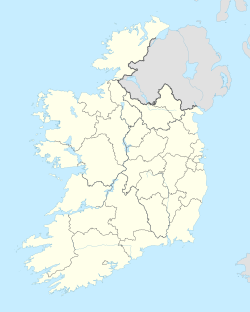Top Qs
Timeline
Chat
Perspective
Carrigans, County Donegal
Village in County Donegal, Ireland From Wikipedia, the free encyclopedia
Remove ads
Carrigans (Irish: An Carraigín, meaning 'little rock')[2] is a village in The Laggan, a district in the east of County Donegal, Ireland. The village is located on the R236 regional road, a short distance from the River Foyle.
This article needs additional citations for verification. (June 2018) |
Remove ads
History
Carrigans was at one time[when?] the centre of a major flax and linen producing area, possessing one of the largest flax mills in County Donegal, before the demise of the flax industry in the 1950s.[citation needed] Commercial salmon fishing was also a major employer in the past.[citation needed]
Killea (St. Fiach's) Parish Church (Church of Ireland) is in the village of Carrigans. [citation needed]
Carrigans once had a railway station, the village being served by the Great Northern Railway, which closed in 1965.[citation needed]
The Bangalore torpedo, an explosive device used in many conflicts, was invented by Captain (later Colonel) McClintock, of Dunmore, Carrigans. [citation needed]
Carrigans was one of several Protestant villages in eastern Donegal that would have been transferred to Northern Ireland, had the recommendations of the Irish Boundary Commission been enacted in 1925.[3]
Remove ads
Notable residents
- Dunmore House, on the edge of the village, was formerly the home of the McClintock dynasty, an Ulster-Scots family. It is now owned by Sir John McFarland, 3rd Bt.[citation needed]
- Sir Jim Starritt, a former Deputy Commissioner of the Metropolitan Police, was born in Carrigans.[citation needed]
- The writer Dame Agatha Christie visited Carrigans on a few occasions, as a guest of the McClintocks of Dunmore, to whom she was related through marriage.[citation needed]
Remove ads
See also
References
External links
Wikiwand - on
Seamless Wikipedia browsing. On steroids.
Remove ads


